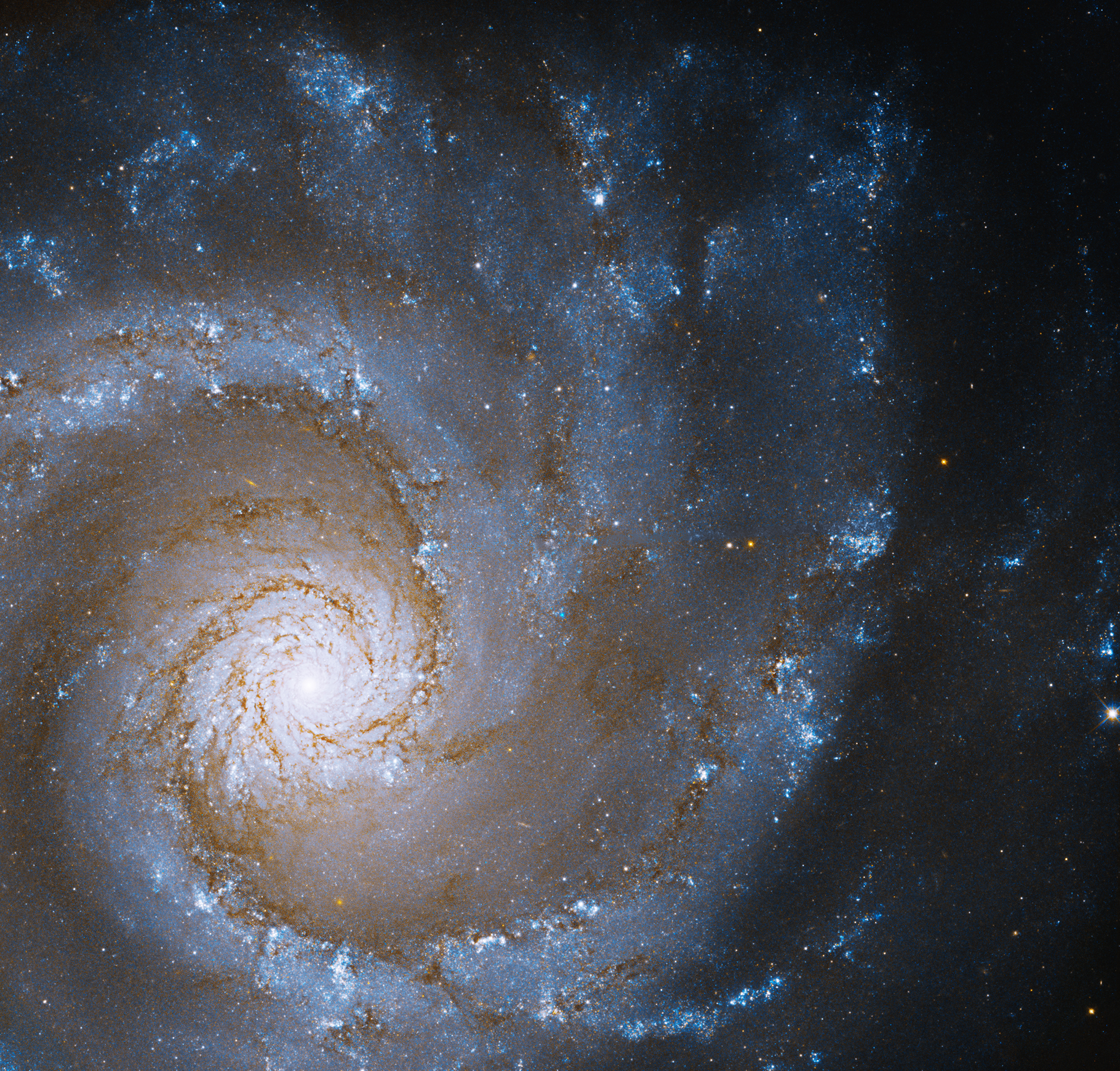Spectacular Hubble image captures 'grand spiral' galaxy

This sky full of stars from the Hubble Space Telescope is, to quote Coldplay, a heavenly view.
It's a galactic image from the telescope's Wide Field Camera 3 and Advanced Camera for Surveys, focusing on NGC 3631. The spiral arms of the "Grand Design Spiral", as this object is nicknamed, are absolutely brimming with starbirth.
The color blue represents visible wavelengths of blue, and orange is showcasing infrared or heat-rich areas that are otherwise difficult to see due to dust in the way.
Related: The best Hubble Space Telescope images of all time!
"Star formation in spiral [galaxies] is similar to a traffic jam on the interstate," NASA said in a statement about the new image on May 26.
"Like cars on the highway, slower moving matter in the spiral’s disk creates a bottleneck, concentrating star-forming gas and dust along the inner part of their spiral arms. This traffic jam of matter can get so dense that it gravitationally collapses, creating new stars — here seen in bright blue-white."
Situated 53 million light-years from Earth, NGC 3631 is found in the constellation Ursa Major and represents one of many galaxies that Hubble officials have been showcasing in recent weeks.
Breaking space news, the latest updates on rocket launches, skywatching events and more!
Hubble's galactic research includes fields such as learning about dark matter concentrations, which help to give hints of the universe's structure overall, along with galaxy collisions, formation scenarios and types, according to a NASA page showcasing the science of the telescope.
"From supermassive black holes at galactic centers to giant bursts of star formation to titanic collisions between galaxies, these discoveries allow astronomers to probe the current properties of galaxies as well as examine how they formed and developed over time," NASA stated in the science explainer.
Hubble's 32 years of research in orbit will soon get a deep-space companion. The James Webb Space Telescope is completing its commissioning at Lagrange 2 to extend Hubble's work even deeper into the universe.
"Galaxies show us how the matter in the universe is organized on large scales. In order to understand the nature and history of the universe, scientists study how the matter is currently organized and how that organization has changed through out cosmic time," NASA officials wrote of Webb's expected work, which will focus on the earliest galaxies of our universe.
Some of the Webb Cycle 1 studies for galaxies will focus on matters such as star formation, early galaxies with "low metallicity" (rich in hydrogen and helium), dwarf spheroidal galaxies, and the famous, nearby Andromeda Galaxy (M31) system of satellite galaxies.
Follow Elizabeth Howell on Twitter @howellspace. Follow us on Twitter @Spacedotcom or Facebook.

Elizabeth Howell (she/her), Ph.D., was a staff writer in the spaceflight channel between 2022 and 2024 specializing in Canadian space news. She was contributing writer for Space.com for 10 years from 2012 to 2024. Elizabeth's reporting includes multiple exclusives with the White House, leading world coverage about a lost-and-found space tomato on the International Space Station, witnessing five human spaceflight launches on two continents, flying parabolic, working inside a spacesuit, and participating in a simulated Mars mission. Her latest book, "Why Am I Taller?" (ECW Press, 2022) is co-written with astronaut Dave Williams.

